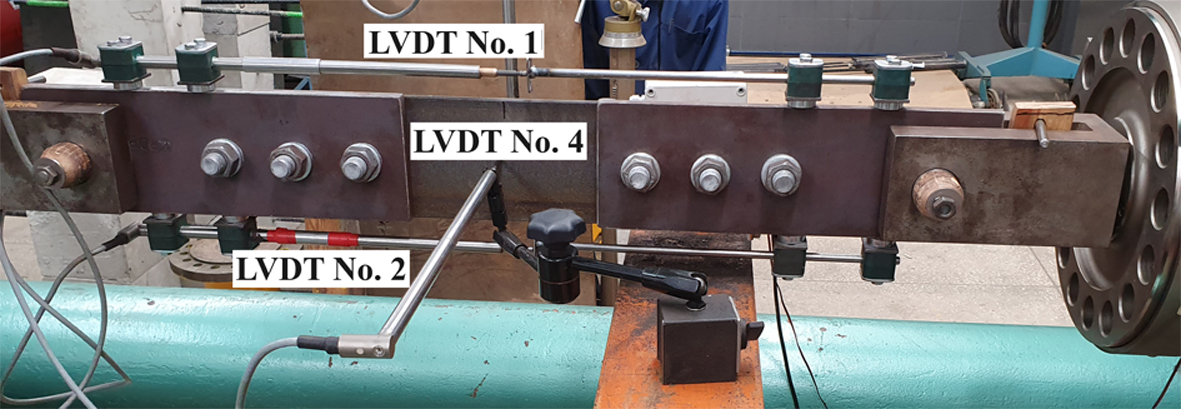Experimental tests of tension connections of steel angle sections of lattice transmission towers
1
Faculty of Civil Engineering, Warsaw University of Technology, Poland
2
R&D Department, ENPROM Ltd., Poland
These authors had equal contribution to this work
Submission date: 2023-08-30
Final revision date: 2024-02-15
Acceptance date: 2024-02-27
Publication date: 2025-03-20
Corresponding author
Archives of Civil Engineering 2025;71(1):259-274
KEYWORDS
experimental testsbolted connectionsangle sections connected by one leglattice towerstension memberstransmission towers
TOPICS
ABSTRACT
In the present paper, the results of experimental tests of bolted connections of angle specimens subjected to tension and connected by one leg are presented. Structural members of such type are commonly applied to the steel lattice supports of overhead electrical lines. The bolted connections of angles connected by one leg to gusset plates are in tension and additional bending moment that results from the eccentricity of the bolt group. The majority of available existing experimental and numerical investigations regarding the bolted connections of steel angles in tension have been conducted using mostly short specimens. Within this paper, the influence of the specimen length on the behaviour of angles connected by one leg in tension is shown on the basis of the comparison of the results from the experimental tests of shorter and longer specimens of the same size of angle section. Equal-leg angles in two cross-section dimensional groups – L90x6 and L120x8, and of two lengths: 600 mm and 1500 mm were tested. A basic test included determining the destructive force, elongation of a specimen and its deflections. In the case of some specimens, the tests were extended to include strain measurements in characteristic places of the angles - in the middle of the length and in the bolted connection zone. The conclusions from the conducted experimental tests confirm that the length of a specimen has an impact on the results, with a greater effect observed in angles with larger cross-sections, and thus with a greater load eccentricity.
Share
RELATED ARTICLE
We process personal data collected when visiting the website. The function of obtaining information about users and their behavior is carried out by voluntarily entered information in forms and saving cookies in end devices. Data, including cookies, are used to provide services, improve the user experience and to analyze the traffic in accordance with the Privacy policy. Data are also collected and processed by Google Analytics tool (more).
You can change cookies settings in your browser. Restricted use of cookies in the browser configuration may affect some functionalities of the website.
You can change cookies settings in your browser. Restricted use of cookies in the browser configuration may affect some functionalities of the website.




